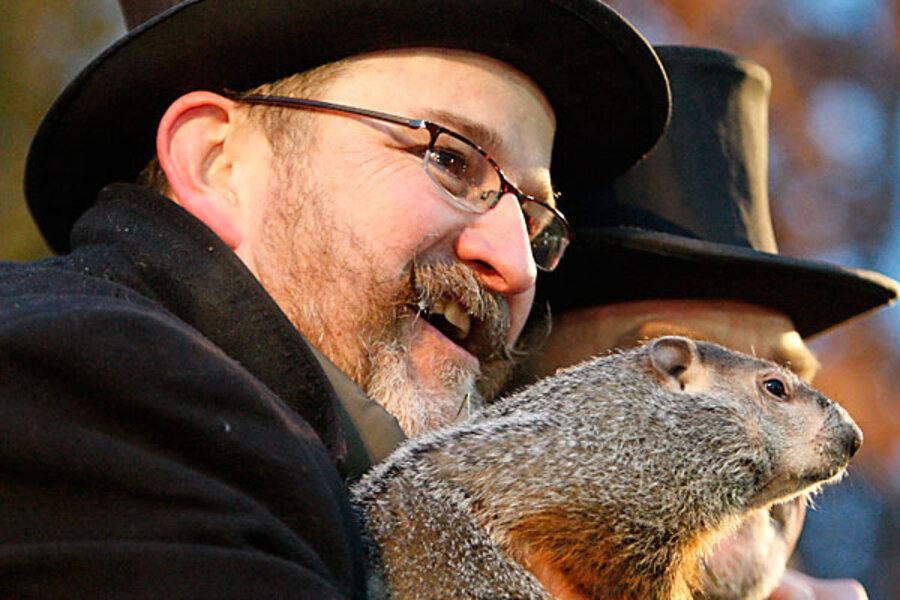Groundhog Day: Top five animal forecasters
Loading...
| Boston
Top Five Animal Weather Forecasters ...
5. Birds on a telephone wire signal a rainstorm. (Think Hitchcock’s “The Birds.”)
4. When dogs eat grass, expect a severe storm. (Or, you forgot to feed your dog.)
3. Squirrels are busier gathering nuts before a bad winter. (But who really has time to count nuts?)
2. If rats in the hold climb out on deck, it will be a fair day. (Or maybe tanning machine below deck is broken.)
1. If Punxsutawney Phil sees his shadow there’ll be six more weeks of winter. He’s right 39 percent of the time, claims StormFax Weather Almanac. Or, he’s right 61 percent of the time and StormFax is the mixed up one.
Before Punxsutawney Phil – Seer of Seers, Sage of Sages, Prognosticator of Prognosticators, and Weather Prophet Extraordinary, according to his agent – started seeing his shadow in Pennsylvania, Celts looked to badgers and Europeans looked to bears to divine the weather.
But the folklore of weather goes well beyond the winter forecast.
What do the woodpeckers and woolly bears say?
In England, it’s said that rain is on the way when the woodpecker laughs, and that frost is coming if a cat sits with its back to the fire. Plants and trees, too, evidently have the knack: frost is ended when mulberry tree put out shoots, but if the Ash buds before the Oak, then it’ll be “a regular soak.” And in lower Canada and America's northeast, Woolly Bear Caterpillars are said to show a wider middle brown section if the coming winter will be mild.
But the world's most famous prognosticator is that groundhog from Punxsutawney. A holiday created by German settlers in Pennsylvania, Groundhog Day owes its roots to the Catholic holiday of Candlemas in Europe and the Celtic holiday of Imbolc before that, says Eileen Reilly, a professor at New York University’s Irish Studies Program.
“In Ireland and on the British isles, there are many stories of waiting to see an animal like the badger emerge from hibernation,” she says. “Any animal that would tend to bury itself underground and sleep off the winter.”
First came Candlemas
Groundhog Day is likely on Feb. 2 to keep in line with the Christian holiday of Candlemas, which celebrates Jesus being taken to the temple in Jerusalem soon after his birth. Out of the holiday came this English rhyme: “If Candlemas Day is clear and bright, winter will have another bite. If Candlemas Day brings cloud and rain, winter is gone and will not come again.”
But before Candlemas and even before the birth of Jesus, says Reilly, the Celts celebrated Imbolc, or the season when sheep began to give birth to lambs, with a lights festival and even a weather forecast. This celebration was likely passed to the rest of Europe and became the basis for Candlemas and later Groundhog Day.
“If animals start to emerge, on or around Imbolc, then winter’s duration will be short,” she says. “Variations on that theme dates back to pagan times. As with so many other pagan feast days, there’s a Christian veneer put on it.”
And even when it's not Groundhog Day, Reilly says, it’d be prudent to keep an eye out for stray groundhogs, badgers, and especially bears.
“That’s a good policy.”





